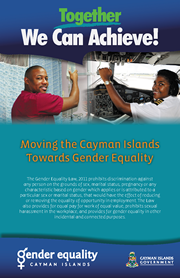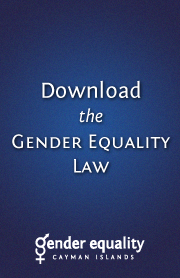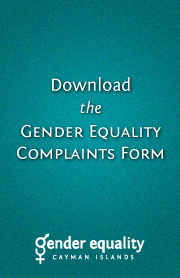Worldwide, most countries recognize that equal rights should exist between men and women. Many have produced regulations intended to fight discrimination and programs granting women access to health, education, and economic rights such as land ownership. However, the fact remains that women have fewer opportunities than men to benefit from economic development, with lower participation in the labor force.
Even in the most advanced countries, their wages average 73 percent of those of men. International programs such as the Millennium Development Goals point out the benefits of addressing gender inequality and the positive impact this can have on poverty reduction.
According to the Cayman Islands National Assessment of Living Conditions conducted in 2006/07 “The overall labour force participation rate for the Cayman Islands was at 71.9 percent, and labour force participation by males (73.6%) exceeded female participation (70.1%).”
While the principle of gender equity in the workplace is generally accepted, discriminatory practices persist in many organizations despite regulations to the contrary. It is important to create an open and friendly atmosphere to address gender discrimination issues; therefore it is critical to involve men and women rather than only women. Because gender biases are embedded in culture, it is very difficult to eliminate them without having a holistic view and involving men as a part of the solution.
Promoting Gender Equality Makes Good Business Sense
In Mexico, a Gender Equity Model or “GEM 2003” was developed and tested by 57 firms with around 250,000 employees, and they were certified by the project closing date of December 2005. The model that was developed proved to be a successful tool for promoting gender equity in the private sector. The following were the empirical results that GEM 2003 identified in a qualitative survey administered to firms. The firms reported:
- improved labor environment within the firm (31 percent of the firms)
- better communication between management and workers (23 percent of the firms)
- an increased number of women in managerial positions (9 percent of the firms)
- increased productivity (8 percent of the firms)
- reduction in salary gap (8 percent of the firms)
- reduction in maternity-related discrimination (8 percent of the firms)
(Information from: Smart Lessons in Advisory Services, “Gender Equity Promotion in the Private Sector in Mexico: The Development of a Successful Model” by Maria Elena Castor and Template Equality and Diversity Policy by Working Association of Voluntary Services)



